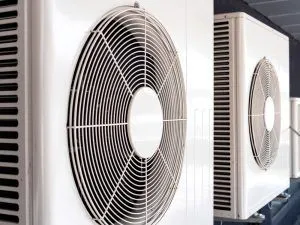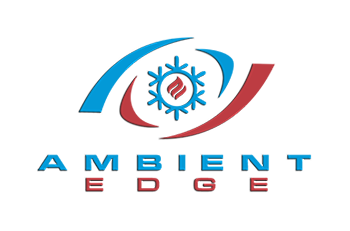
Here at Ambient Edge, we know heating, cooling, and ventilation, better known as HVAC. So for our purposes today, we will be talking about Multi VRF as it applies to heating and cooling, rather than the same term that applies to VPNs and routing. For us, Multi VRF is a Multi Variable Refrigerant Flow (VRF) system.
Multi VRF systems are modular heating and cooling systems that can be customized for any commercial operation, no matter how large. That’s because they provide energy-efficient heating and cooling to multiple zones at the same time, maximizing building design options. VRF systems are most commonly installed in commercial buildings, but may also be used in high-end, large residential applications..
Multi VRF systems have been widely used in other countries for more than 30 years. Japanese HVAC company Daikin first invented the VRF HVAC system in 1982. In Japan, VRF systems represent 90% of new installations in commercial buildings such as high rise apartment buildings, manufacturing plants, etc.
VRF HVAC made its way here to the United States in the early 2000s, mainly as an affordable way to heat and cool commercial buildings. VRF is known for its superior energy efficiency and ability to offer a quick return on investment in energy savings. And according to the General Services Administration (GSA), VRF HVAC systems “are particularly appropriate to existing buildings that use excessive energy or need HVAC repair and upgrades for other reasons.”
If you already know all about VRF and want a system installed, call Ambient Edge today for a quote. Otherwise, keep reading to learn more.
How a Multi VRF HVAC System Works
A multi VRF HVAC system is pretty complex. The simplest explanation of variable refrigerant flow technology is to say that it is a large-scale ductless commercial HVAC system that can perform at a high capacity. VRF HVAC systems will vary in exact design based on the application. These systems are highly customizable.
In most cases, project and facilities managers choose VRF technology because it allows multiple indoor units or zones to operate simultaneously on the same system. VRF systems can either be a heat pump system or a heat recovery system, both of which provide simultaneous heating and cooling.
VRF HVAC systems are refrigerant-based, using outdoor condenser units and indoor fan coil units, just like traditional systems. But instead of one large unit pumping out air to the entire building, a VRF HVAC system utilizes several smaller air handlers that can be individually controlled and piped back to one system.
The variable refrigerant flow means the system controls the amount of refrigerant flowing to each of these small air handlers. So, say a hospital neonatal intensive care unit needs to be heated to a certain temperature. But the hospital’s server room needs to be cooled to a temperature 15 degrees lower. The VRF system makes both possible, at the same time.
Another example of where a VRF system would be highly useful is in a hotel, apartment complex, or university dormitory, where occupants want (and now have) the ability to customize temperature settings to their personal preferences.
Other Benefits of a Multi VRF HVAC System
In addition to being highly customizable and providing heating and cooling simultaneously in the same space, VRF systems have several other benefits including:
Quiet
Unlike some older HVAC systems that make a lot of noise, VRF systems are extremely quiet. By installing a VRF HVAC system, you reduce ambient noise on both the interior and exterior of a building.
Energy Efficient
VRF HVAC systems use even less energy than some of today’s most efficient standard HVAC systems. This is for a number of reasons. A Multi VRF system is designed to provide exactly the amount of heating or cooling needed for the current conditions. This means it runs less often and at a lower capacity. The VRF HVAC system also captures heat put out during the cooling process and reuses it in other areas that require heating.
Certain VRF HVAC systems may be eligible for LEED credits.
Compact and Ductless, Great for Tight Spaces
For the most part, VRF HVAC systems are ductless, and the air handlers are smaller than traditional units. This means the systems don’t require as much wall and ceiling space. That allows for higher ceilings and bigger rooms, or more rooms in the same space in new construction. For these reasons, a VRF HVAC system is ideally suited for installation when renovating historic buildings.
Get a Quote on a Multi VRF System
If a multi VRF HVAC system sounds perfect for your large home or commercial facility, call Ambient Edge and we’ll set up an on-site consultation. We’ll likely need to make an on-site visit, to ensure we help you choose the best multi VRF system for your specific heating and cooling needs.


